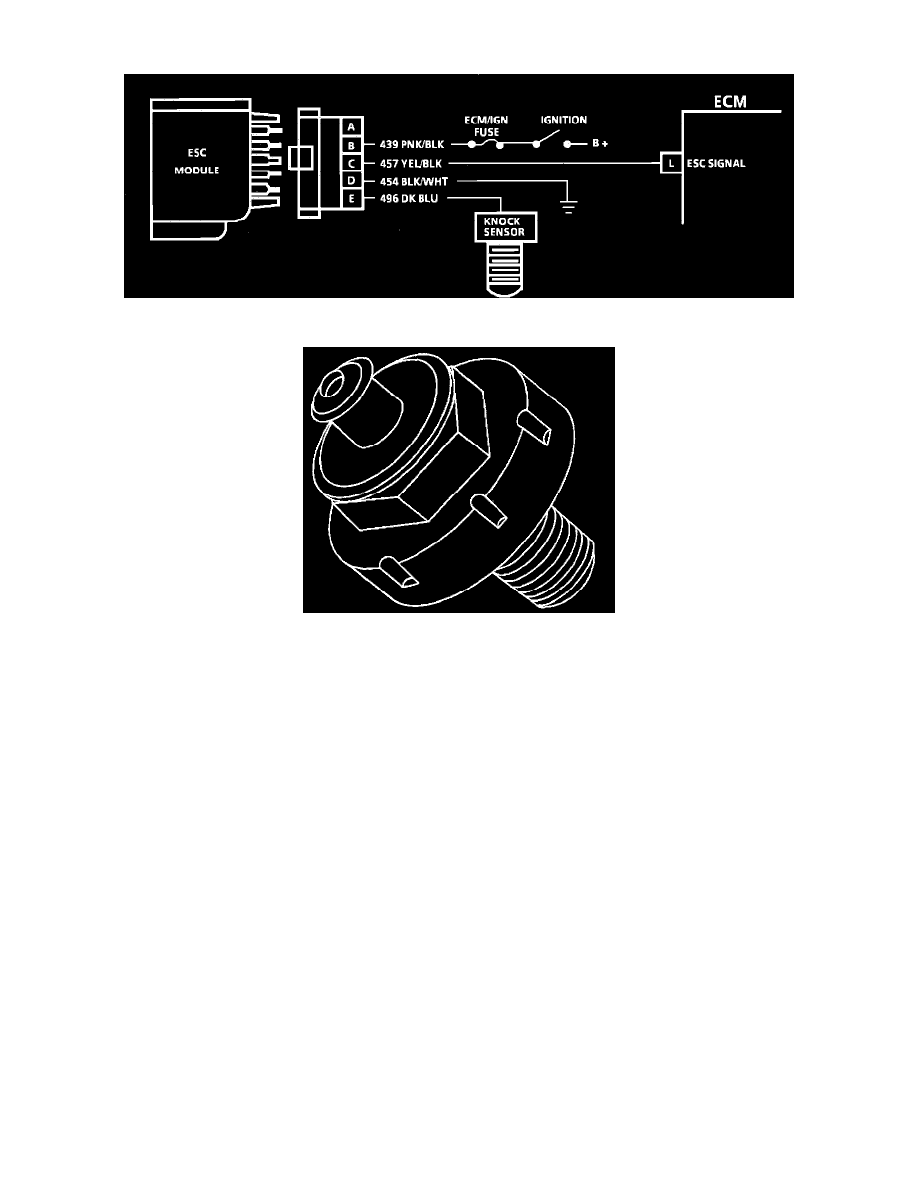S10/T10 Blazer 4WD V6-262 4.3L (1989)

Electronic Spark Control Module: Description and Operation
ESC Wiring Diagram
A knock sensor is mounted on the engine block. It is connected by a blue wire to the ESC module, mounted on a bracket on the back of the engine. The
knock sensor, in response to engine knock (detonation), sends a signal to this module. The module decodes these signals, and if they indicate spark
knock type noise, a retard signal is sent to the ECM which in turn retards the spark advance.
PURPOSE:
The Electronic Spark Control (ESC) system is designed to retard the spark timing up to 20~ to reduce spark knock (detonation) in the engine. This
allows the engine to use maximum spark advance to improve driveability and fuel economy.
Varying octane levels in todays gasoline can cause detonation in an engine. Detonation is called spark knock.
OPERATION:
The ESC system has three components:
^
ESC Module
^
ESC Knock Sensor
^
ECM
The ESC knock sensor detects abnormal vibrations (spark knocking) in the engine. The sensor is mounted in the engine block near the cylinders. The
ESC module receives the knock sensor information and sends a signal to the ECM. The ECM then adjusts the Electronic Spark Timing (EST) to reduce
the spark knocking.
The ESC module sends a voltage signal (8 to 10 volts) to the ECM when no spark knocking is detected by the ESC knock sensor, and the ECM provides
normal spark advance.
When the knock sensor detects spark knock, the module turns OFF the circuit to the ECM. The ECM then retards EST to reduce spark knock.
